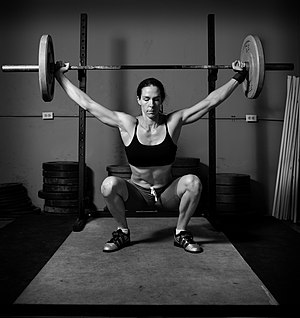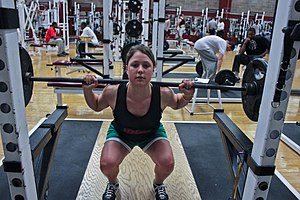With each flip of the calendar, ideas for training that once worked become less successful. It is the growing mind that constantly looks for new ideas to try. Some ideas are great. Others are left behind. Read any stereotypical body building magazine and the routines contained in them have you doing 12 and 15 rep sets and low rest periods. Read a strength training manual and the sets have much lower rep counts and longer rest periods. Why can’t both be used?
Without going into too much detail about fast and slow twitch muscles, the idea of doing a mixed training routine is not a new one nor is it without some merit. The pursuer of any such routine must be aware of two major compromises:
- There will not be enough volume to fully inflate the muscle bellies
- The weights will not be heavy enough to build full strength
Often such compromises are fine for those not going to compete on stage in a pose off nor a power lifting event. The idea with hybrid training is to take the best of strength training and high volume and put them together. Training routines are made to last 45 minutes to an hour. Strength is done first, hypertrophy volume next. Do not neglect the negative portion of a rep on any set. The negative portion is very important for building strength and hypertrophy.
Enough hand waving. What about a routine? Sure, soon enough. The split for a week is two days training, one day rest, then two more days training and another day of rest. If you are too worn out or want align it better for a week, take two days rest at the end of a cycle. Such a schedule make be as so: train Monday and Tuesday, rest of Wednesday, train Thursday and Friday, rest over the weekend.
First Day Session – Legs
Training of legs starts with squats in a 5×5 format, with pyramiding weights for each set. The idea is to finish each set and you should be quite tired by the end of the last rep. Fail to hit 5 reps on any set, reduce the weight and finish out. Use that weight for the subsequent sets.
High rep walking lunges and standing calf raises finish out the routine. It may seem simple and easy, but it isn’t. Do not be surprised when your quads are screaming for the next couple of days.
The Routine
Squats – Warm Up – 45 seconds rest
- Bar only – 5 reps
- 30% 5 rep max – 5 reps
- 40% 5 rep max – 3 reps
- 60% 5 rep max – 2 reps
Squats – Work Sets – start with 75% of 5 rep max – add enough weight after each set to reach 5 rep max on last set. When all reps are done for all sets, add weight for each set the next time until a new 5 rep max is reached.
- 75% 5 rep max – 5 reps
- 85% 5 rep max – 5 reps
- 90% 5 rep max – 5 reps
- 95% 5 rep max – 5 reps
- 100% 5 rep max – 5 reps
Dumbbell Walking Lunge – use a weight heavy enough to tax for the whole set, but not too much you get off balance
- 20 reps – 4 sets – 90 seconds rest
Standing Calf Raises – same weight for each set. Vary the foot placement for inside, middle, and outside portions of the calf. Hit each part with 2 sets.
- 20 reps – 6 sets – 2 sets each for inside, middle, outside
Up next, chest and upper back. It will be time for push/pull super-sets. Be ready.




















































